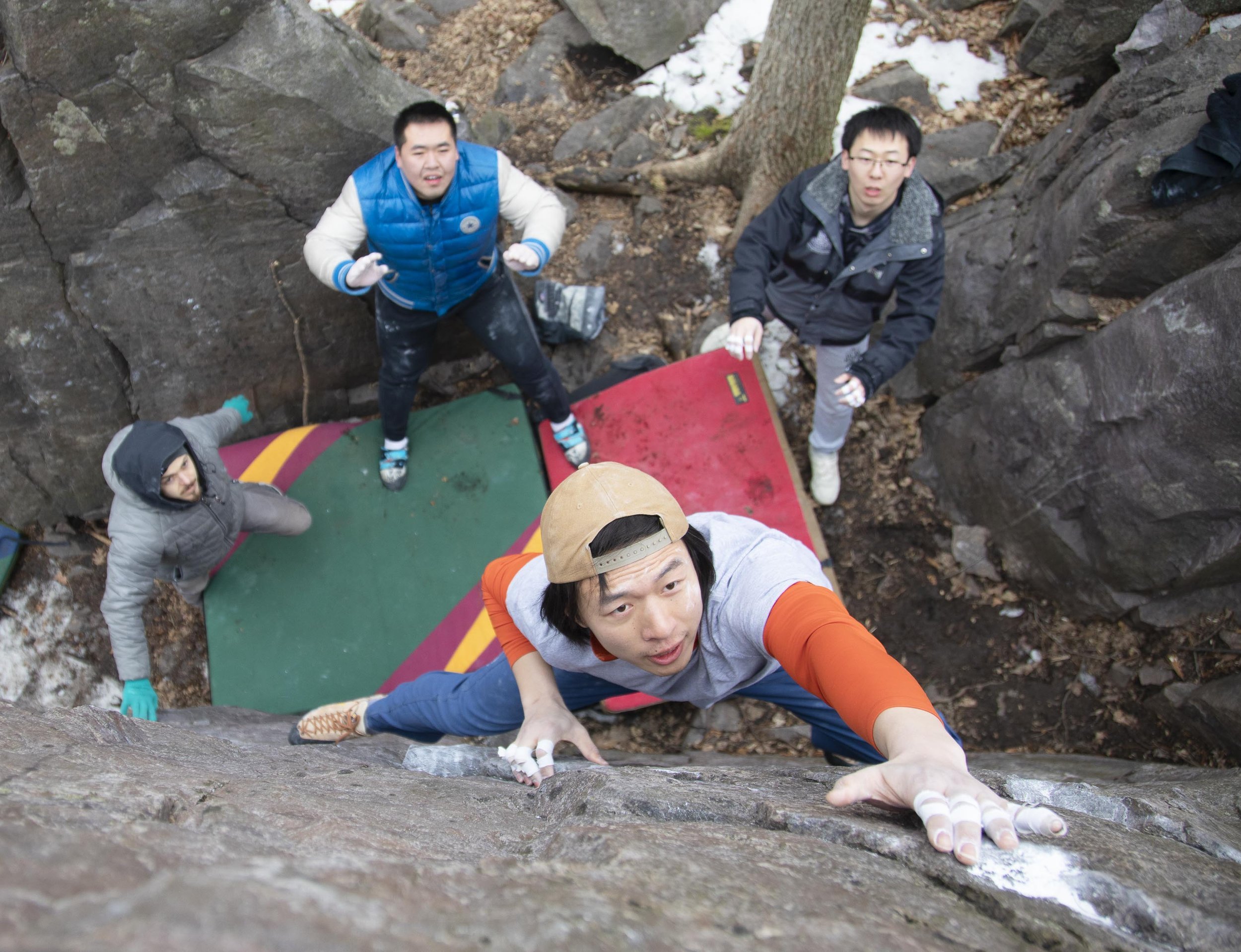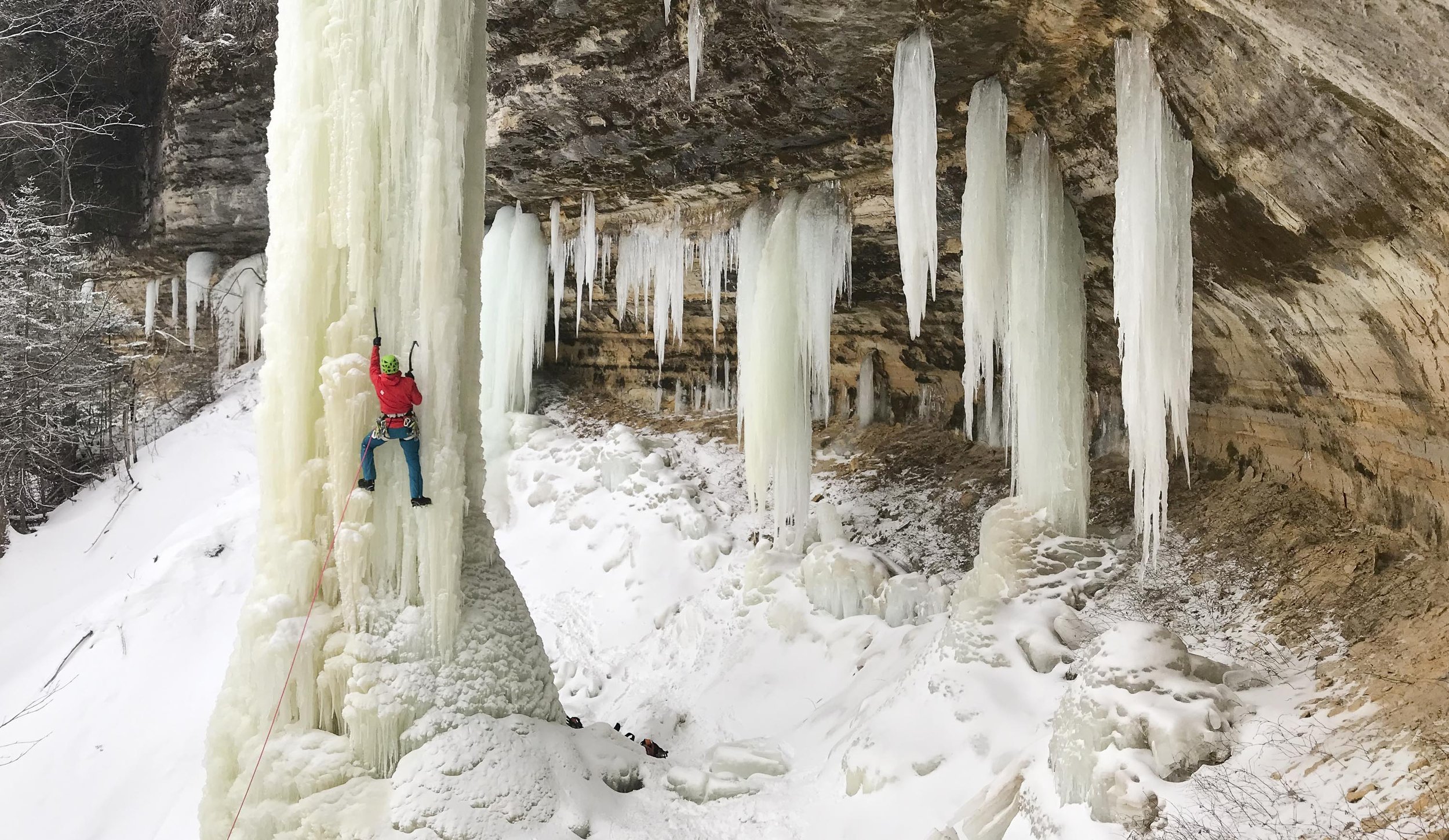Climbing Disciplines: Explained
Understanding Types of Climbing
When we climb, we use our hands and feet to make upward progress. Sounds straightforward, right?
Maybe it is, until you find yourself wondering what the difference is between scrambling, bouldering, and free climbing, or the difference between “free climbing” and “free soloing.” Although they all have some traits in common, each climbing pursuit its own unique discipline, with a specific movement style, setting, and purpose.
A sense of climbing difficulty ratings helps you understand the various types of movement under the large “rock climbing” umbrella.
Scrambling
Scrambling is how we describe moving through most third and fourth class terrain. Climbers use their hands as they move over steep, rocky terrain, or at least have their hands ready. It’s helpful to try to maintain three points of contact on the rock at all times, to minimize the risk of slipping off and falling. If the route is particularly exposed or poses risks of long falls, climbers may elect to rope up. Different strategies may be used to belay in third and fourth class terrain than in a typical vertical rock climbing setting.
Scrambling can be the means for a casual afternoon adventure, a way to reach the top of a steep, remote summit, or something in between. Scrambling is often considered more intuitive than the movement involved with navigating 5th class terrain, so it can be a great accessible entry to the mountains. However, novices may be less aware of rocks that are likely to shift, or the best spot to place one’s feet. Be extremely cautious, as taking a fall while scrambling can be a big, dangerous problem. Consider what would happen, should things go wrong, and make sure you’re fully informed of the risks.
Scrambling is popular at Devil’s Lake, given the fairly vast (for the midwest) talus fields between the lake and the top of the bluffs, and it’s also common among various mountain ranges around the world. Check out this webpage featuring world-class scrambling destinations, but be sure you’re educated and prepared before you give any of them a go.
Free Climbing
No, not the thing Alex Honnold did in that movie. Climbing without a rope is called free soloing, and it’s an extremely high risk activity (not recommended). Free climbing, on the other hand, just means relying on your own strength and using your limbs to make upward progress on a 5th class route, only weighting the rope in the event of a fall. Free climbing can be done by leading or top-roping a route. You’ll need to puzzle your way through the series of hand and footholds, pulling, pushing, and balancing your way to the top.
Top-rope Climbing
A great, lower-risk option for those new to climbing, top-rope climbing can be done indoors or out. As the name implies, the rope is set up above the climber in advance. The rope runs from the climber, up through an anchor at the top of the cliff, and back down to the belayer. When a top-rope climber falls, they simply sink onto the rope, which the belayer is keeping taut. The rope may stretch as the climber weights it, but the climber isn’t going to experience free fall; they’ll more or less end up in the same spot on the wall that they let go.
Top-rope climbing requires access to the top of the cliff to set up the rope and anchor system, unless it’s already set up for you (like in the gym). In many places, climbers can simply hike to the top, but sometimes, that’s just not possible.
Lead Climbing
Gaar Lausman leading Totally Clips (5.11a) at the Panty Wall in Red Rock NRA
If you’ve ever seen a climbing area without a hiking trail to the top of the cliff and wondered: How did they get the rope up there?, lead climbing was likely the means.
A lead climber attaches the rope to pieces of protection on their way up the route. If they fall, the piece below them will stop them from hitting the ground, but lead falls are longer and more serious than top-rope falls.
When a lead climber falls, they fall twice the distance between them and the last protection they clipped. So if the climber has moved three feet above their last piece, they’re at risk of a six foot fall. On a sheer or overhanging wall, these falls can be no big deal, but many routes have ledges, loose rock, or other features that make lead falls higher consequence, and a lead climber must always take into account the quality and security of the protection they’re relying on.
Sport Climbing vs Trad Climbing
There are two forms of lead climbing: Sport and Traditional (mostly just called “trad”).
In sport climbing, the protection is permanently fixed to the rock. Bolts and hangers are spaced intermittently on the route, so the climber simply clips the rope to those as they pass by. They’ll typically do this using a length of webbing with a carabiner on either end (called a quickdraw), one end for the rope, the other for the bolt/hanger.
In trad climbing, there is no fixed protection, so a climber must place removable pieces of gear into features of the rock to clip the rope to as they pass. While there are numerous types of protection used by trad climbers, they fit into two broad categories: passive gear and active gear. Passive gear has no moving parts and functions based on its shape and size. It’s often placed into particular features in the rock to act as a stopper, unable to fall through. Active gear has moving parts made to allow the item to contract (to fit into a crack or pod) and then expand against the rock feature it’s placed in.
Sarah Geers places a small cam while leading Queen’s Corner (5.4) at Devil’s Lake SP
Lead climbing is also commonly done in indoor gyms, typically with fixed quickdraws on the wall and anchors at the top. This can be a great introduction to sport climbing, but before taking your climbing skills to the crag, be sure you know what challenges leading outdoors will bring. The terrain may pose rocky, dangerous landing zones or loose rock, you’ll need to decide for yourself if the bolts in play are trustworthy, and there’s the pesky matter of getting your gear off the wall when you’re done on a route (called “cleaning”). Guide services, gyms, and local climbing clubs and organizations may all offer courses on safe transitions to lead climbing outdoors - make use of them so you feel confident and well prepared when you tie into the sharp end outside!
Bouldering
Bouldering, like top-rope and lead climbing, requires that climbers progress up a route by their own power. In this context, each path is called a “problem”, and they’re much shorter than typical roped climbing routes (think 10-20 feet). As a boulderer climbs, they don’t use a rope to protect them, so every fall means landing on the ground. To keep minimize risk, they use thick foldable mats, called crash pads, to make landing areas softer and flatter.
In addition to padding the landing zone, boulderers rely on spotters to help protect their head and spine and make sure they land on the pads if they fall. Boulder problems are known to feature powerful series of movements, and they all must be smoothly linked together to make for a proper ascent. Due to the shorter nature of the climbs, the presence of spotters, and the challenging puzzle of it all, bouldering is a very social activity. Boulderers take turns working on problems, spotting each other, and working out the sequence that best facilitates an ascent of the problem.
Aid Climbing
Commonly used as a means to ascend routes that are too difficult to free climb, aid climbing uses various tools to allow the climber to make upward progress. Aid Climbers often use the same protection as lead climbers, such as bolts, nuts, and cams. However, rather than just relying on the pro in case of a fall, aid climbers will attach a nylon ladder to each piece, climb up to it, and repeat on their way up the wall.
Aid climbing requires a series of steps for each single “move” a free climber would make. It’s time consuming and challenging technically. One must be extremely proficient in placing gear as well as efficient and smooth with the overall process.
Mountaineering
The objective in mountaineering is to reach a summit. Different strategies and skills are employed in pursuit of the summit, including hiking, glacial travel, rock climbing, skiing and/or ice climbing. Mountaineering is high risk; it often takes climbers to remote places where the consequences of a mistake are high and rescues are not easily carried out.
Mountaineers must be experts at negotiating glaciers, crevasses, avalanches, and loose rock, all of which are commonly found in the high mountains. Sometimes, mountaineers take off on long expeditions, using elaborate base camps and porters or sherpas to assist them in their summit attempts.
Alpinism
Alpinism fits under the umbrella term of mountaineering, but it is distinct. Climbers still seek to attain a summit, and they may need to navigate avalanche terrain, loose rock, or snow and ice. While mountaineers’ focus is on dealing with this terrain and other factors, such as weather and altitude, an alpinist seeks technical challenges in the disciplines of rock, ice, aid, or mixed climbing in a mountain environment. Alpinists are known to favor a “fast and light” approach over the “siege style” base camps and porters of traditional mountaineers.
Ice Climbing
Ice climbers use specialized tools to ascend steep or vertical ice. Crampons are metal spikes that attach to a climber’s boots, and ice axes are swung into the ice to give the climber something to pull on to make upward progress. Like roped rock climbing disciplines, ice climbing can be lead or top-rope. The protection an ice climber uses is a bit different; ice screws are driven into the ice to protect a fall or build a top-rope anchor.







